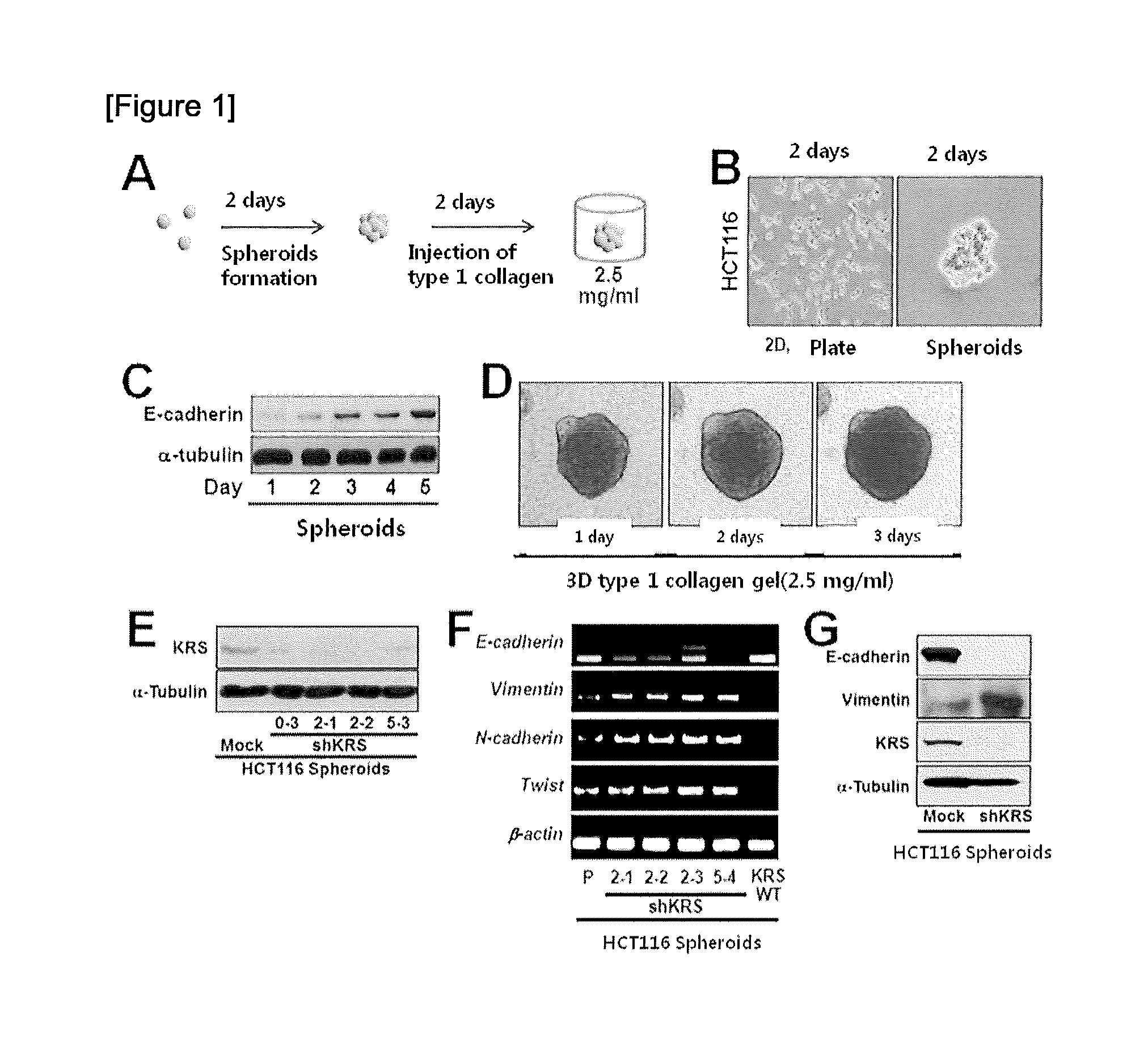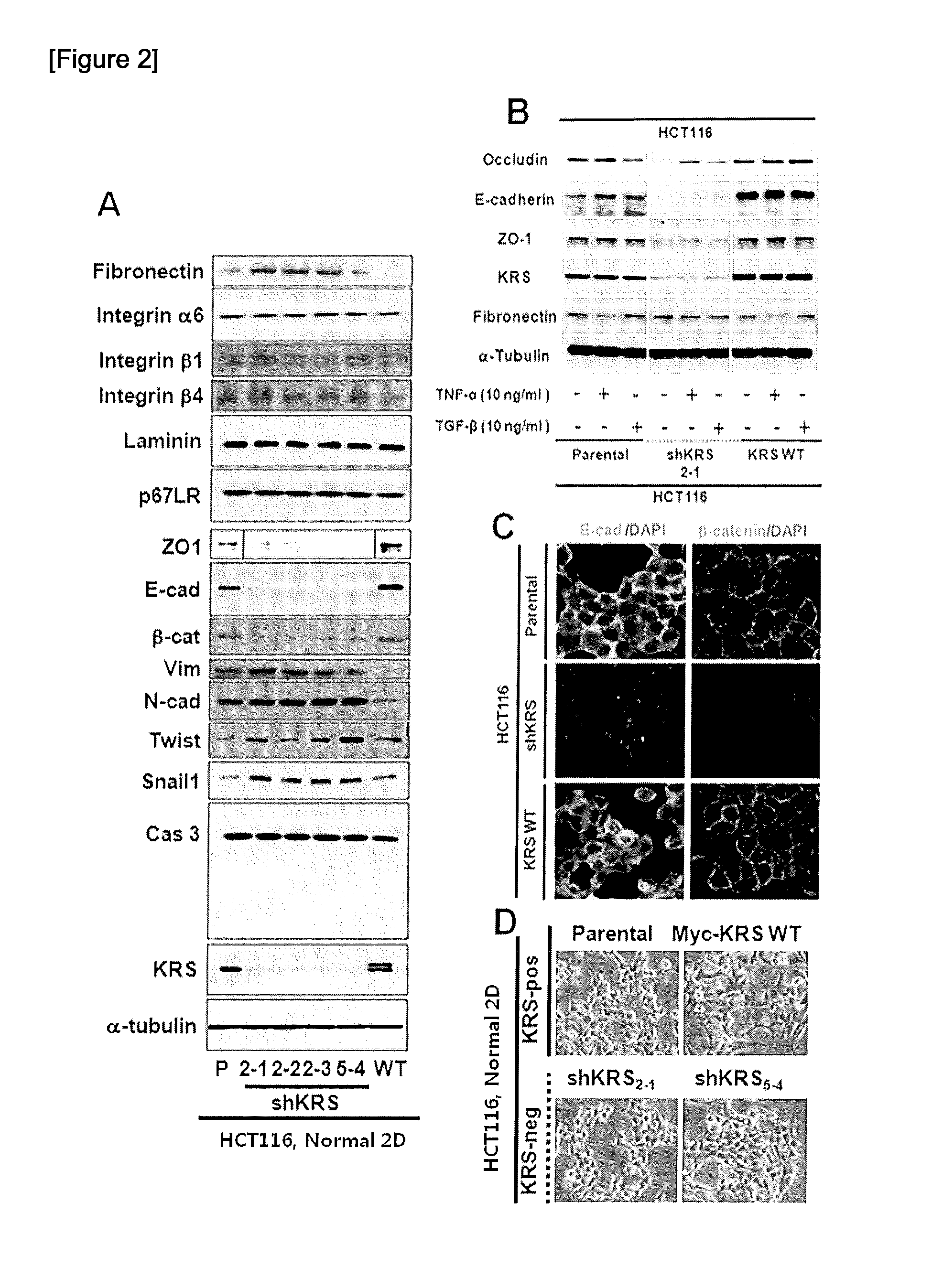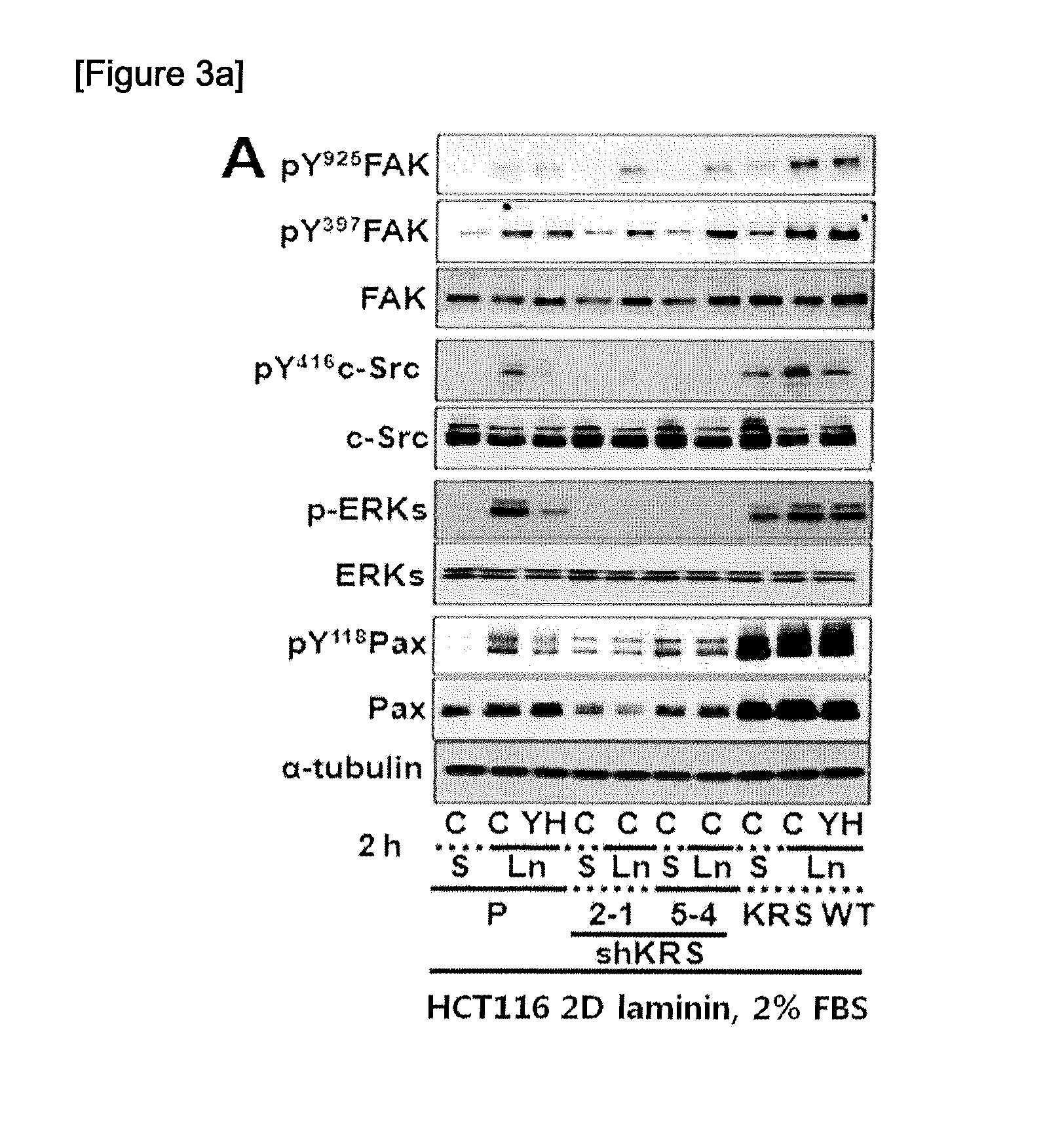Method for screeing cancer metastasis inhibitor using culture of cells or spheroidically aggregated cells in which lysyl-trna synthetase is regulated to be expressed or unexpressed
a cancer and inhibitor technology, applied in the field of cancer metastasis inhibitor screening, can solve the problems that cancer development and metastasis cannot be fundamentally controlled, loss of tissue functions, etc., and achieve the effect of high efficiency
- Summary
- Abstract
- Description
- Claims
- Application Information
AI Technical Summary
Benefits of technology
Problems solved by technology
Method used
Image
Examples
example 1
Increase of E-Cadherin Expression in Spheroid Cells
Culture of Spheroid Cells
[0183]HT116 (American Type Culture Collection, USA), the human colorectal cancer cell line, was cultured in a 37° C. incubator for two days, and then the cells were collected by treating trypsin / EDTA. The collected cells were precipitated by centrifugation, to which 10 me of RPMI-1640 supplemented with FES was added. Cell number was measured by using hematocytometer. 10 ml of RPMI-1640 supplemented with FBS was distributed in a culture dish, to which the above cells were added at the density of 3×105. The cells were cultured by hanging drop culture method in a 37° C. incubator by using Perfecta3D Hanging Drop Plates (3D Biomatrix, USA) to obtain spheroidically aggregated cells.
[0184]As a result, as shown in FIG. 1B, the morphology of those cells cultured in a two-dimensional environment was flat shape adhered onto the floor and when the cells were cultured by hanging drop culture, they formed spheroidically...
example 2
Epithelial-to-Mesenchymal Transition in the Spheroidically Aggregated Cell Line Wherein Lysyl-tRNA Synthetase (KRS) Expression was Suppressed
Construction of the Spheroidically Aggregated Cell Line Wherein KRS Expression was Over-Expressed or Suppressed
[0188]The spheroidically aggregated cell line wherein KRS expression was over-expressed or suppressed was constructed from the spheroidically aggregated cells obtained by the method of Example .
[0189]Particularly, the cell line wherein KRS expression was suppressed was constructed by transfecting cells with lysyl-tRNA synthetase MISSION® shRNA plasmid DNA (Sigma, USA). At this time, the said KRS was homo sapiens lysyl-tRNA synthetase (transcript variant 1, mRNA sequence: NM_001130089.1). This KRS includes 1219 bp long exon 1˜15. Among the purchased KRS shRNA plasmid DNAs, shKRS-0 (SEQ. ID. NO: 1) targets 1581˜1604 bp (exon 12) of KRS, shRKS-1 (SEQ. ID. NO: 2) targets 437˜459 bp (exon 3˜4), shKRS-2 (SEQ. ID. NO: 3) targets 911˜933 bp (...
example 3
Inducement of Incomplete EMT Phenotype by the Inhibition of KRS Expression in a Two-Dimensional Culture Environment
Decrease of the Cell-Cell Adhesion or EMT Related Protein Expression by the Inhibition of KRS Expression in a Two-Dimensional Culture Environment
[0199]Western blotting was performed to investigate the cell-cell adhesion or EMT related protein expression in HCT116 cells cultured in 100 mm cell culture dish in a two-dimensional environment with 10% serum.
[0200]Particularly, the cell line cultured in a two-dimensional environment with 10% serum was washed with PBS twice, followed by reaction at 4° C. for 15 minutes in 200 μl of lysis buffer [50 mM Tris-HCl, pH 7.4, 1% NP-40, 0.25% sodium deoxycholate, 150 mM NaCl, 1 mM EDTA] supplemented with SDS, Na3O4V, and protease inhibitor cocktails (GenDepot, USA). The cells were collected and centrifuged at 4° C. at 13000×g for 30 minutes. The supernatant was transferred in a new microcentrifuge tube, followed by protein quantifica...
PUM
| Property | Measurement | Unit |
|---|---|---|
| Adhesion strength | aaaaa | aaaaa |
| Strength | aaaaa | aaaaa |
| Cell adhesion | aaaaa | aaaaa |
Abstract
Description
Claims
Application Information
 Login to View More
Login to View More - R&D
- Intellectual Property
- Life Sciences
- Materials
- Tech Scout
- Unparalleled Data Quality
- Higher Quality Content
- 60% Fewer Hallucinations
Browse by: Latest US Patents, China's latest patents, Technical Efficacy Thesaurus, Application Domain, Technology Topic, Popular Technical Reports.
© 2025 PatSnap. All rights reserved.Legal|Privacy policy|Modern Slavery Act Transparency Statement|Sitemap|About US| Contact US: help@patsnap.com



